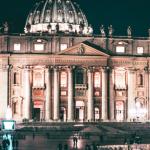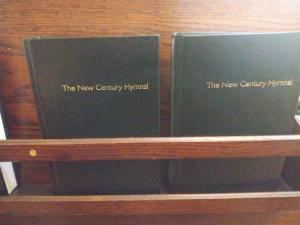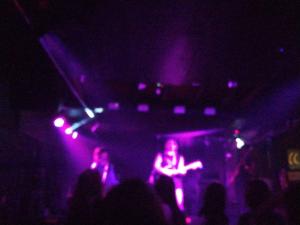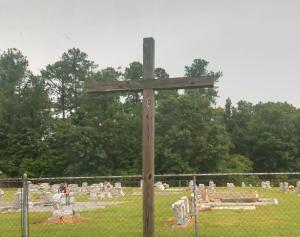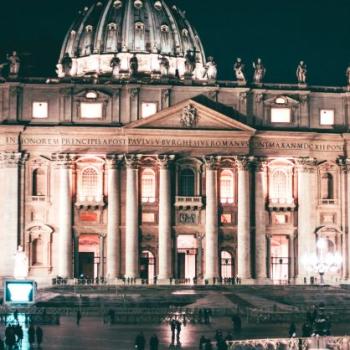I am undertaking a long-term project of visiting as many different varieties of churches as I can and writing about the experiences in order to better understand various points of view and lived experiences within the broadly Christian milieu, as well as to seek out what Catholicism calls the “seeds of truth” tucked away within the soil of every tradition.
(Note to my Catholic readers: This project does not include skipping out on Sunday mass or taking communion outside the Catholic Church, so there should be no need for concern).
My first visit was to my local “Anglo-Catholic” parish of the Episcopal Church. Before we get to the nitty-gritty, two brief questions with similarly brief answers: “What is ‘Anglo-Catholic’?” and “What is the Episcopal Church?”
The Episcopal Church is the official US branch of the global Anglican Communion. It is descended from and in communion with the Church of England but functionally separate and autonomous. The word episcopal means “having to do with bishops,” because the church is governed by bishops.
An Anglo-Catholic is someone in the Anglican tradition who engages with a lot of Catholic practices and theology. Anglo-Catholic churches are fully Anglican and not in communion with the Pope, but many of them call their liturgies “mass,” use incense and candles, have tabernacles, and pray to saints. This is the result of something called the Oxford Movement, in which members of the Church of England urged their coreligionists to reconnect with the church’s pre-reformation roots.
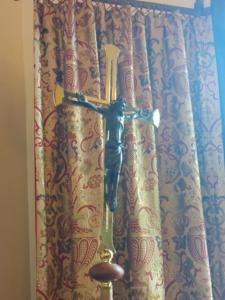
Now that the definitions are out of the way, what was it like to visit such a church for the first time? Well, first of all, it was familiar. There was a robed choir, a pipe organ, a tabernacle, altar, kneelers in the pews, holy water at the entrances, stained glass windows, stations of the cross along the walls, crucifixes, a statue of the Virgin Mary, and even a good number of Byzantine-style icons of various saints. According to the bulletin I picked up on the way in, I was attending “Mass.”
One of the most striking things was that this church had no free standing altar. Spanning the front of the church were three tremendous wooden steps, leading up to a raised wooden platform which housed the elegant, wood-carved ambo or pulpit on the far right and the smaller lectern on the far left. Then, further back, there was an altar rail separating this platform from the “holy of holies,” so to speak: an archway of marble and a marble-floored alcove with a magnificent high altar against the far wall, on which sat a gold-plated gospel book, about a dozen symmetrically-assembled candles, a golden cross, and the Eucharistic elements, in fine metal vessels, covered with all the typical ceremonial cloth. To the side was a tabernacle which was built into the wall itself over which hung the candle with which Catholics are all too familiar: the candle which is lit to indicate the presence of consecrated Eucharistic elements. To these Episcopalians, the true body of Christ was in there, and they made it clear.
Because of the design of the altar, the priest had to perform the mass ad orientem, that is, facing away from the congregation except when addressing them directly. This was once the traditional posture of prayer but has since fallen out of fashion within Catholicism. This was my second time attending a service conducted this way. The first was in a small Lutheran church. As before, I found myself absolutely awestruck by seeing the priest turn and face the same direction as everyone else. The sense of priest and people all standing together before God as one body, rather than the priest turned towards the people like some kind of teacher or performer, will never not speak to me, and I found myself wishing that this option were more readily available for those of us who do connect with it so deeply.
Also in keeping with older traditions than most Catholics are wont to follow these days, most of the service was sung or chanted, including the Lord’s Prayer and the Nicene Creed. In fact, I don’t think there was a single spoken response the whole time except for “Thanks be to God” after the readings.
On the other hand, there were a few things about the mass which were decidedly Protestant or Reformed in nature. For one, despite using the word mass, the liturgy employed was Rite II from the Book of Common Prayer, the guide to worship used by all Episcopal churches. Structurally it has pretty much all the same parts in the same order as a Catholic mass, but the wording of many of the prayers is quite different.
Also, we of course used the Episcopal 1982 hymnal. One song in particular stood out, hymn 706 “In Your Mercy, Lord, You Called Me,” which speaks blatantly of the doctrine of election, even unconditional election, with one stanza saying:
Lord, I did not freely choose you
till by grace you set me free;
for my heart would still refuse you
had your love not chosen me.
It was a poetic expression of a quintessentially Lutheran and Reformed/Calvinistic way of thinking about election and grace, and while not by any means completely beyond the pale for Catholics, it certainly has a few branches in the family theological tree since Augustine.
If not for the use of “we” instead of “I” in the creed and this one very Reformed-sounding hymn, though, I could have almost forgotten I wasn’t in a Catholic church that happened to have retained its high altar and altar rail.
Perhaps the most unique element of the service was in the prayers, when we were called upon to pray for “His Holiness Francis the Bishop of Rome, Justin the Archbishop of Canterbury, and His All Holiness Batholomew the Patriarch of Constantinople.” This highly ecumenical little prayer also had the distinct flavor of Branch Theory – the Angl0-Catholic idea that the “one, holy, Catholic, and apostolic church” exists in three branches: Roman Catholic, Eastern Orthodox, and Anglican, the three communions which maintain, according to their beliefs, apostolic succession and all seven sacraments. Though this theory is dismissed as exclusionary and elitist by most other Protestants and as theologically untenable by most Catholic and Orthodox, it still holds some traction in Anglican circles. Despite not being convinced by branch theory myself, I couldn’t help but feel it was nice to hear my Pope being prayed for in this non-Catholic church, and I could enthusiastically assent to the prayer that he, along with the Patriarch of Constantinople and the Archbishop of Canterbury, would faithfully preach the gospel.
On the way in and out of the church, I saw a great number of pamphlets and booklets containing prayers, devotions, information about the church, and information about the Al-Anon meetings there and help for addiction. Also placed there were a number of rosaries along with a guide on “methods of using the rosary” which included the standard Catholic prayer and various non-Marian adaptations. In general, the entire building showed the same amount of thoroughness and careful planning that the sanctuary and liturgy did, as well as the same beauty, most notably in their small but breathtaking library.
All in all, any visitor to a self-identified Anglo-Catholic parish will undoubtedly be struck by the reverence they experience there and may be surprised to find it accompanied by warmth and welcome. Someone ill-informed could just as easily mistake the service for a genuine Roman Catholic mass, but those expecting it to be utterly indistinguishable may be surprised to find avowed Protestant sentiments sprinkled throughout. Any Episcopalian will be right at home, though they may find the whole affair a bit stuffy. Despite that arguable stuffiness and the fact that not very many people were in attendance, I found the parish surprisingly vibrant, alive with love of their tradition and passion for their community.

